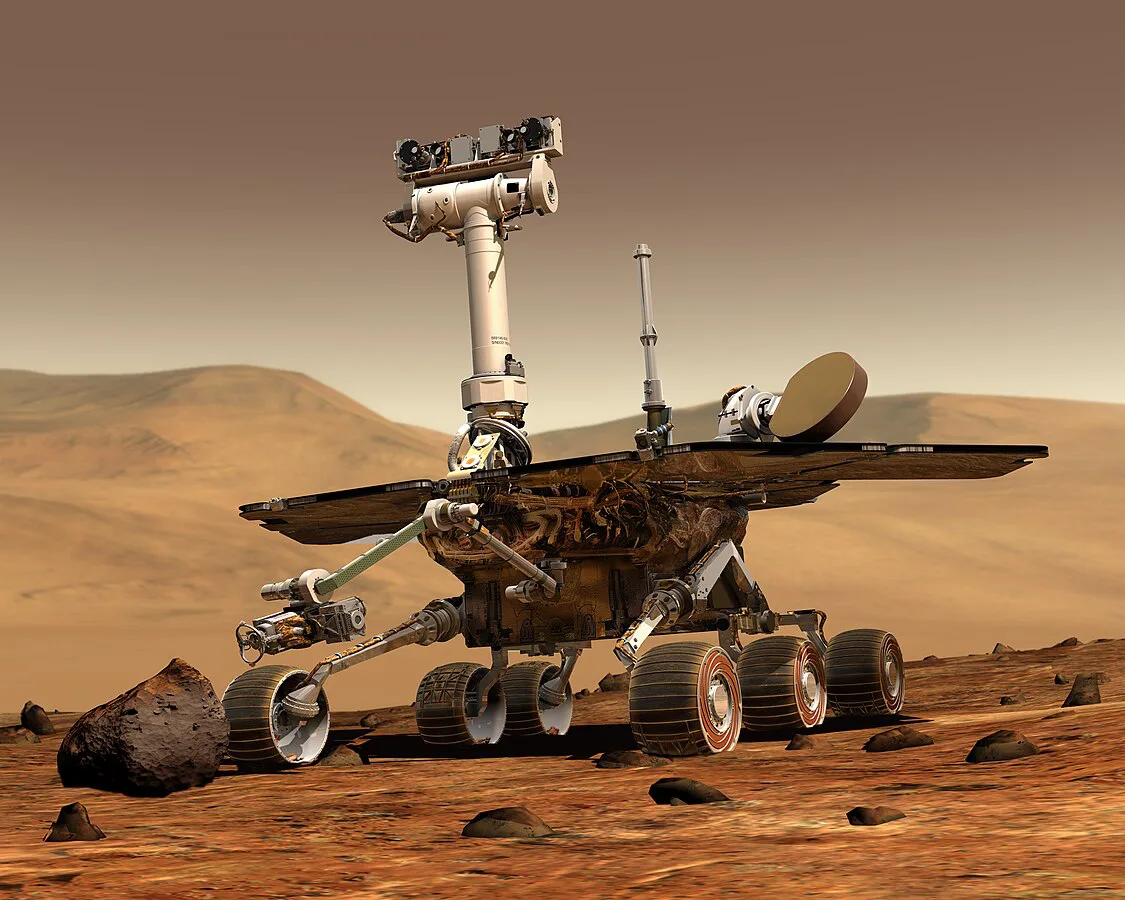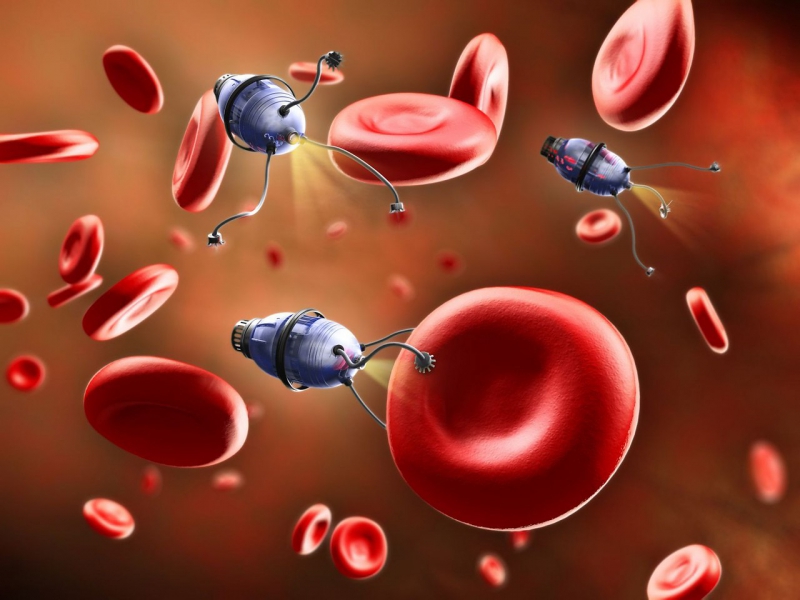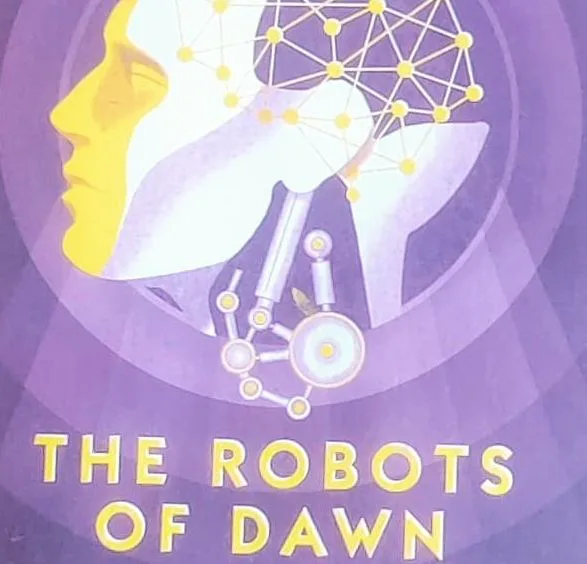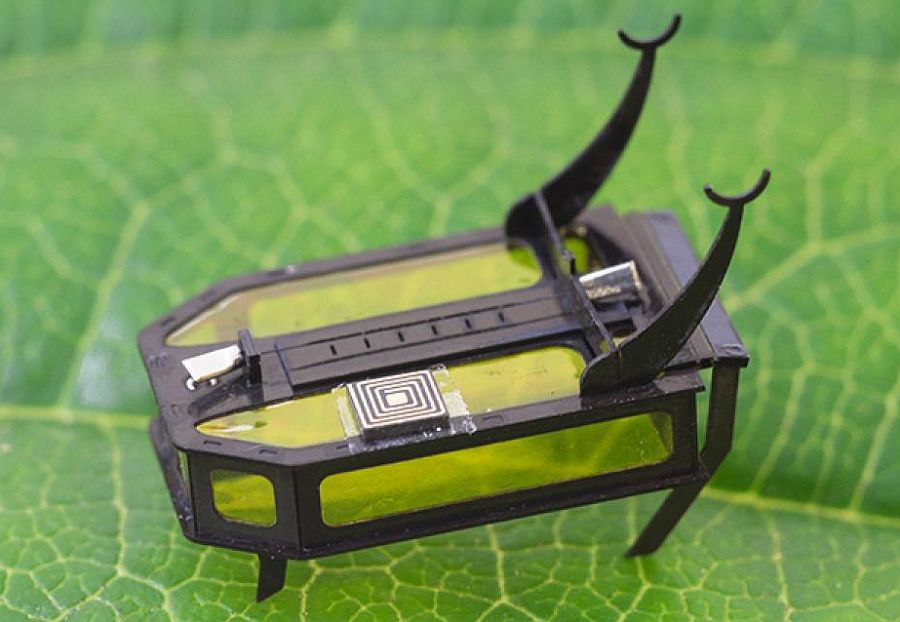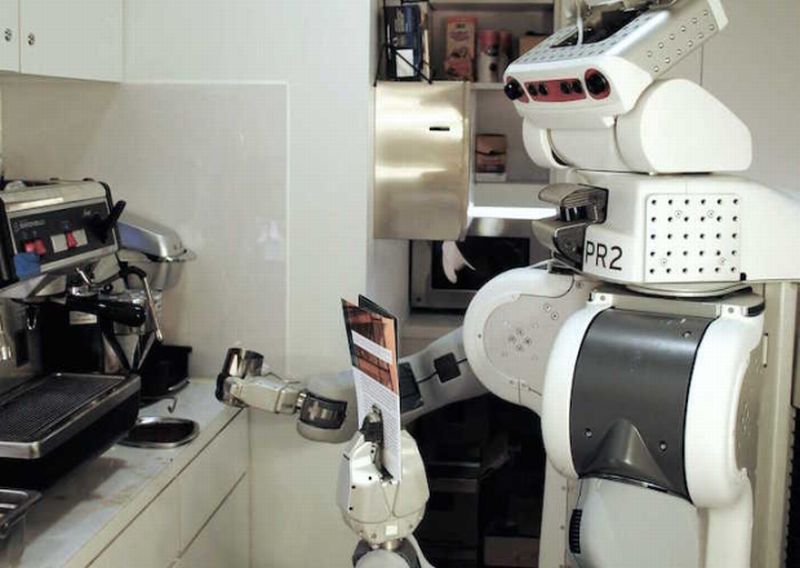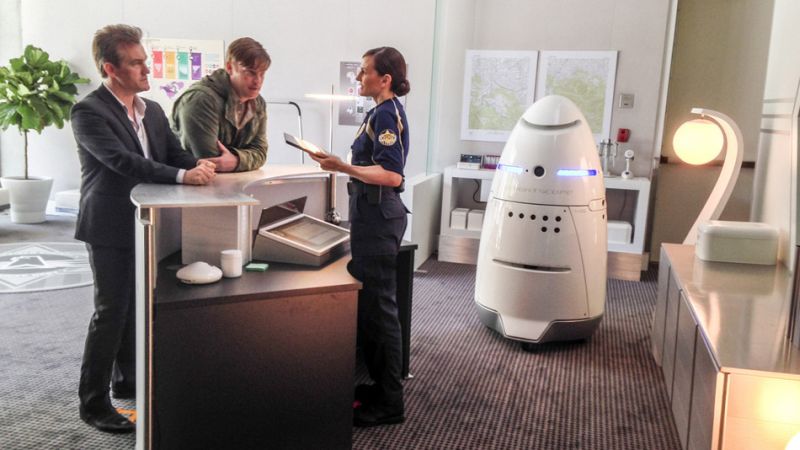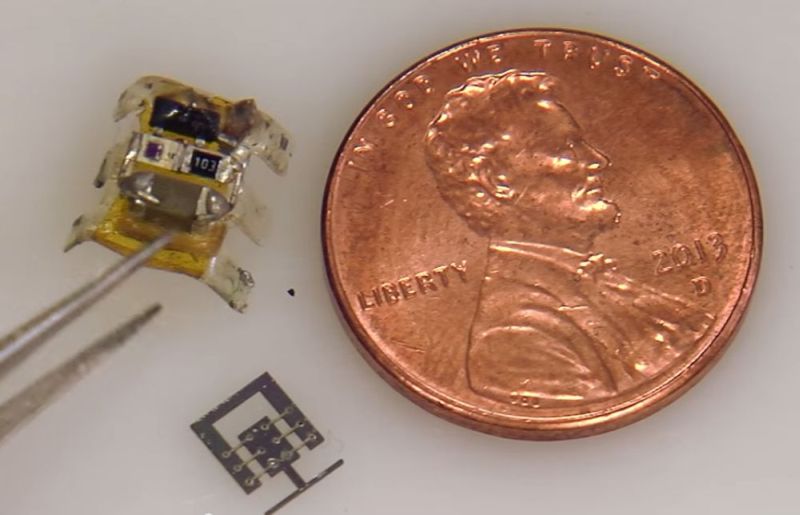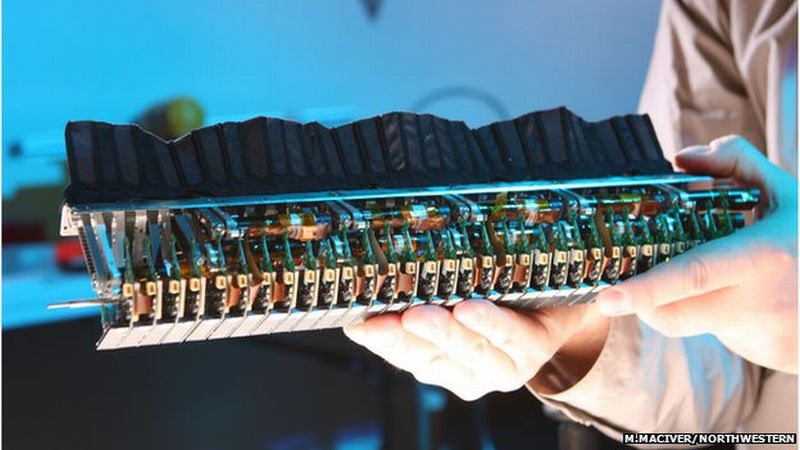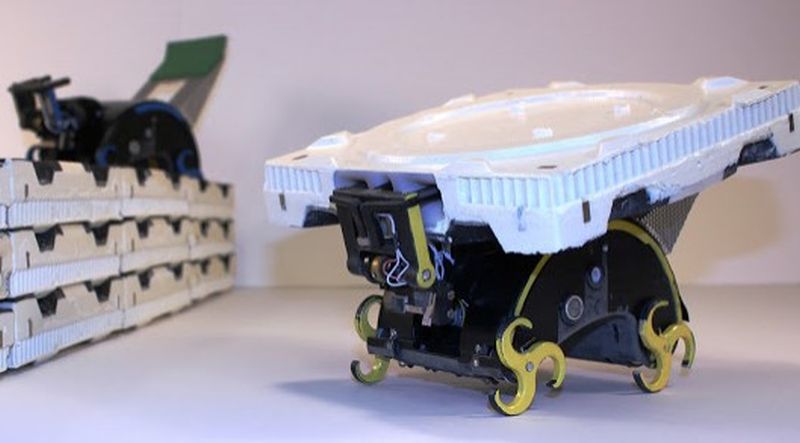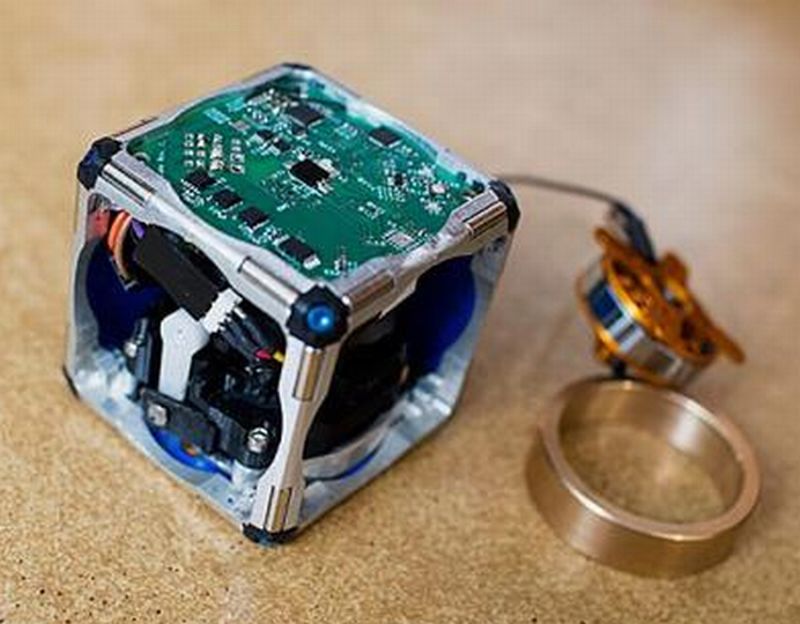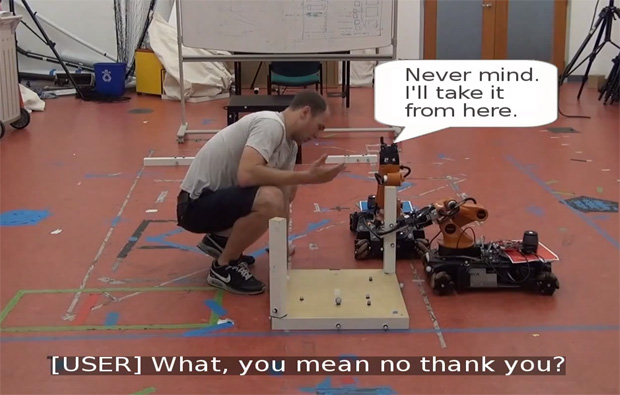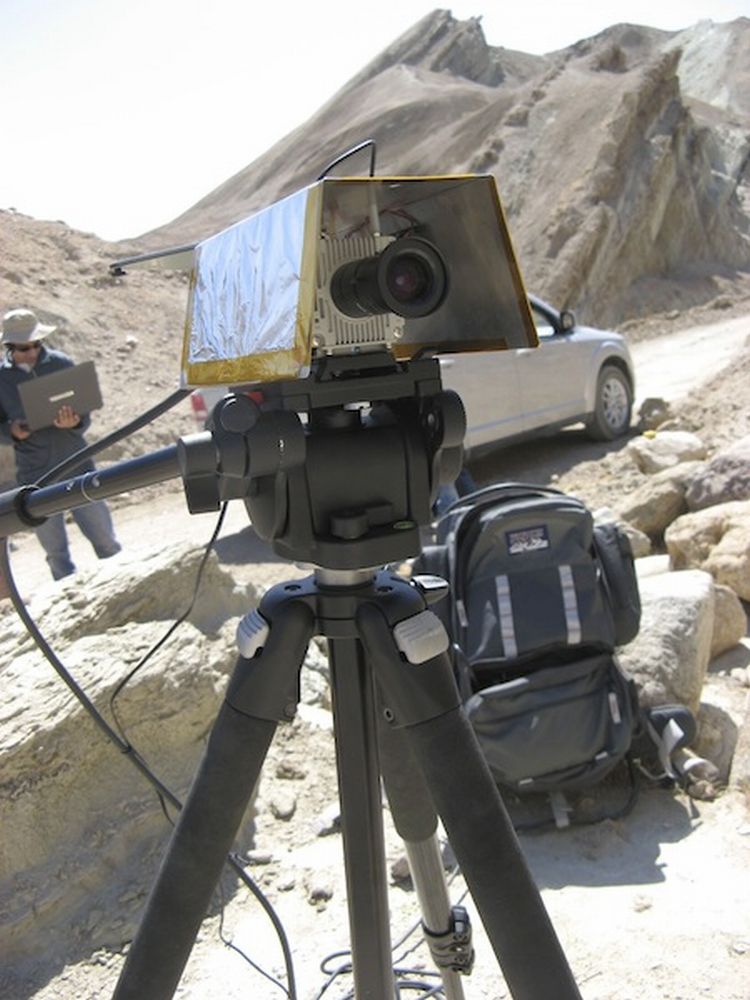Rovers on Mars are constantly monitored and maneuvered by humans on Earth. However, robots on missions to Saturn or Jupiter’s moons can’t get timely commands from Earth. What if these machines could make decisions on the fly? Instead of waiting for an “order”, how about these bots making autonomous choice? Thinking on these lines of thought, researchers at the University of Illinois Urbana-Champaign came up with a cool way for these robots to decide where and how to collect terrain samples on their own.
Search Results for: autonomous robots
Light controlled Organic Microswimmers: Semi Autonomous Microrobots
The idea that nanobots flowing through our blood streams to deliver localised medication or to detect any tumour formation is no more a far-fetched dream. A group of researchers from the Max Planck Institute for Intelligent Systems (MPI-IS) in collaboration with the Max Planck Institute for Solid State Research (MPI-FKF), have developed microswimmers that can navigate through biological fluids, areas that are otherwise difficult to access. Steering is done through external form of light energy.
Book Review: The Robots of Dawn by Issac Asimov
“The Robots of Dawn”, published in 1983, is the third novel in Asimov’s Robots series, following “The Caves of Steel” (1954) and “The Naked Sun” (1957). Isaac Asimov is one of my favorite science fiction writers. Even after nearly four decades, his work remains incredibly relevant today. His plots are fast paced and characters feel so lifelike, even the robots, which are portrayed with such depth and realism. With positronic robots in the mix, he crafts stories that explore the loopholes in the Three Laws of Robotics, which he himself…
Butterfly Robots with Bistable Wings: Biomimicry
In an effort to create faster and more energy-efficient soft robots, researchers at North Carolina State University have created a prototype of swimming soft robots based on manta rays. The team got inspired from the biomechanics of the marine animal. Rate of swimming for most of the (swimming) soft robot is one body length per second, manta rays, however, glide at much faster rate. Their swimming efficiency triggered the scientists to look into the potentiality of creating a similar robot, biomechanically.
Portable Docking Station For Autonomous Charging: Marine Robotics
Rescue missions under natural disasters or man-made catastrophes are not only threatening for the safety of people but also quiet complex and dangerous for a rescue team. In order to increase the efficiency, robots are used in search and rescue (SAR) missions.
RoBeetle: Autonomous Crawling Bot Driven By Methanol Combustion
Researchers have long envisioned designing tiny intelligent autonomous machines that are capable of exploring dangerous environments or the areas where tiny bots can work with full efficiency.
PR2 can prepare coffee autonomously: The Robo Barista
Researchers at Cornell have unleashed PR2, a robot that can prepare coffee autonomously. All the bot require is coffee maker of course and a manual of natural language instructions.
The Autonomous K5: A Bot for Predicting and Preventing Crime
Silicon Valley, the renowned center for invention and development, is always in news. Lately, Microsoft’s robo cop has been creating waves in the tech ocean of the Valley. Start-up, Knightscope has named its security robot K5. Makers of the robot using high tech robotics, predictive analytics and social engagement, wanted to use the bot in predicting and preventing crime. Till now, the company has designed seven robots and envisions positioning four more by the end of this year.
Biomimicry: Insect-Inspired Micro-Robots For Stealthy Surveillance
Drawing inspiration from tiny insects, researchers at the University of Maryland, are developing the world’s tiniest mobile robot, suitably named as micro robots. These tiny robots are designed to take the long distance leap just as bugs do, with the aim of moving quickly or jump over any obstacle with ease in extremely rough terrain. Sarah Bergbreiter leading the research and other teammates from UM, envision the micro robots helping rescue teams in searching victims by quickly crawling through the rubble, at the disaster site, where humans and other traditional…
Ghost Knifefish Inspired Autonomous Underwater Vehicle: Biomimicry
In an attempt to design an underwater vehicle that can go into the depths of ocean, which are not, accessible or not safe for humans to dive in, scientists are studying the Ghost knifefish method of locomotion. The fish are known to hunt in the murky water of the Amazon basin with precision and to sense the environment, rely on the current that they pass through the water and whirl their long fin for smooth motion to move both horizontally (forward and backward) as well as vertically.
Termites Inspire Crew of Tiny Autonomous Bots: Biomimicry
Inspired from termites, which are usually known for causing damages to the buildings, researchers from Harvard University have created a crew of tiny robots that are designed to work autonomously. The bio-inspired robots termed as TERMES can work without any central supervision and can carry bricks to construct structures as towers, castles and pyramids.
Self Assembling Modular Robots: The Future Of Robotics
Modular bot will be the new dimension in the field of Robotics. Unlike the conventional scheme of robots, the modular bots are cube and without any external moving part. Researchers behind the discovery have named each as M-Block. Scientists of MIT, John Romanishin, Daniela Rus and postdoc Kyle Gilpin are going to present a paper describing their new robots at the IEEE/RSJ International Conference on Intelligent Robots and Systems.
Robots Will Now ‘Ask’ For Human Help
Finally, robots will be learning if not all at least some part of human language. Researchers at MIT are teaching robots to interact with humans in human language. Team at MIT taught a group of KUKA’s youBots to ask for help if they happen to face problems while building Ikea furniture. Once the bot determines failure of not completing the task or face some form of huddle which it think cannot pass, it would then call for request in a comprehensible manner.
Super Strong Artificial Muscles: Interactive Soft Robotics
An Italian team of researchers lead by Prof. Marco Fontana, in collaboration with the departments of Industrial Engineering of the Universities of Trento and Bologna, have created an Electrostatic Bellow Muscle (EBM) to fabricate efficient small-scale robots. The innovative robotic muscle has potential of powering itself for a long period of time beyond its preliminary charge.
TextureCam, An Add-on For Bots In Decision Making
NASA’s Mars rover Curiosity is extraordinarily smart. Its autonomous navigation system includes driving, digging, shoveling, and even shooting lasers. However, the next gen bots are a step higher and are extremely tuned in. With their advanced computer and camera systems, they are able to identify locations and geographies that are interesting enough to yield important scientific discoveries. Self-autonomous robots and human machine interaction are one of the major areas, which are undergoing research in Robotics. And Curiosity includes both the paradigms. Human engineer at Jet Propulsion Laboratory (JPL) directs it…

